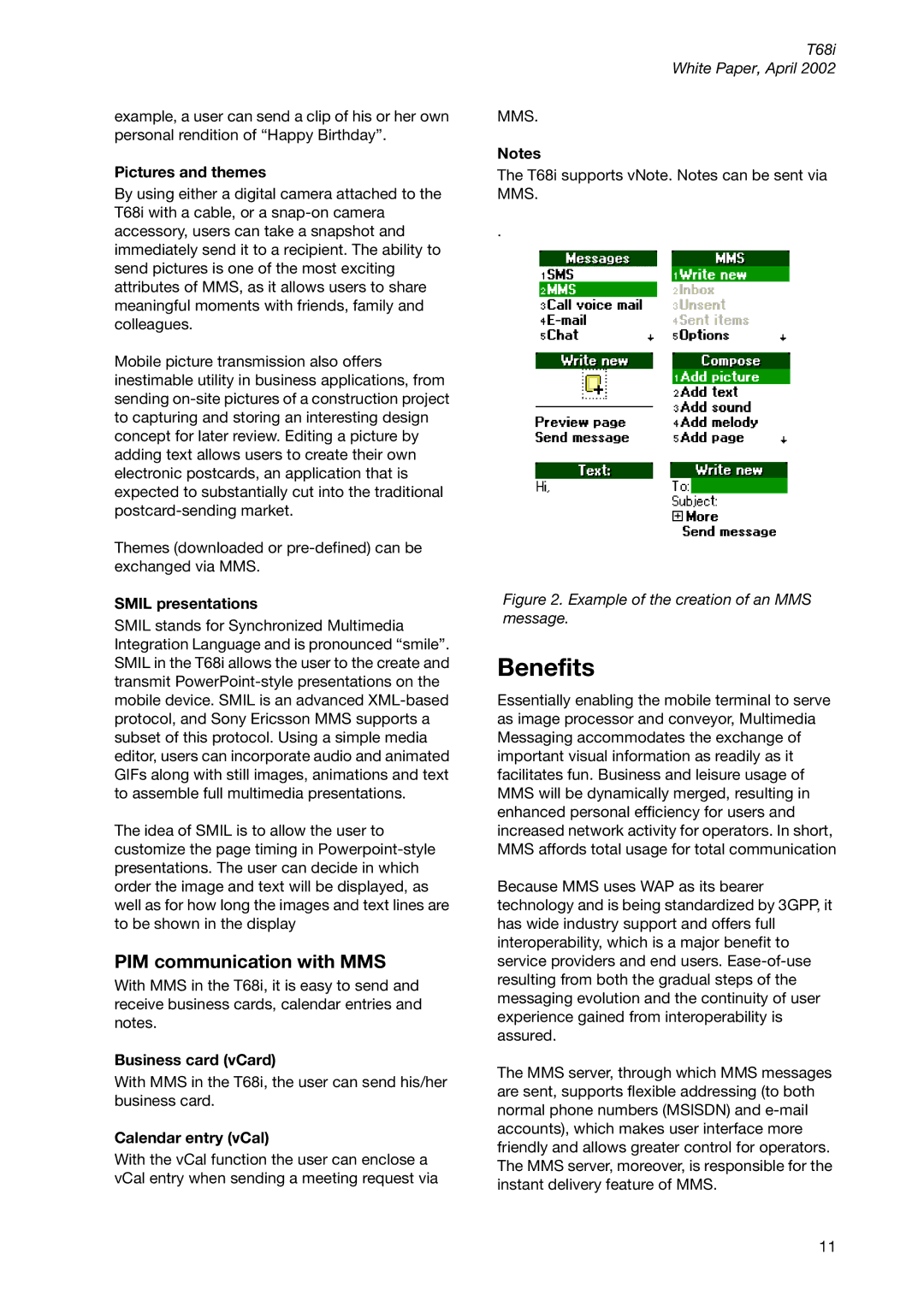
example, a user can send a clip of his or her own personal rendition of “Happy Birthday”.
Pictures and themes
By using either a digital camera attached to the T68i with a cable, or a
Mobile picture transmission also offers inestimable utility in business applications, from sending
Themes (downloaded or
SMIL presentations
SMIL stands for Synchronized Multimedia Integration Language and is pronounced “smile”. SMIL in the T68i allows the user to the create and transmit
The idea of SMIL is to allow the user to customize the page timing in
PIM communication with MMS
With MMS in the T68i, it is easy to send and receive business cards, calendar entries and notes.
Business card (vCard)
With MMS in the T68i, the user can send his/her business card.
Calendar entry (vCal)
With the vCal function the user can enclose a vCal entry when sending a meeting request via
T68i
White Paper, April 2002
MMS.
Notes
The T68i supports vNote. Notes can be sent via MMS.
.
Figure 2. Example of the creation of an MMS message.
Benefits
Essentially enabling the mobile terminal to serve as image processor and conveyor, Multimedia Messaging accommodates the exchange of important visual information as readily as it facilitates fun. Business and leisure usage of MMS will be dynamically merged, resulting in enhanced personal efficiency for users and increased network activity for operators. In short, MMS affords total usage for total communication
Because MMS uses WAP as its bearer technology and is being standardized by 3GPP, it has wide industry support and offers full interoperability, which is a major benefit to service providers and end users.
The MMS server, through which MMS messages are sent, supports flexible addressing (to both normal phone numbers (MSISDN) and
11
